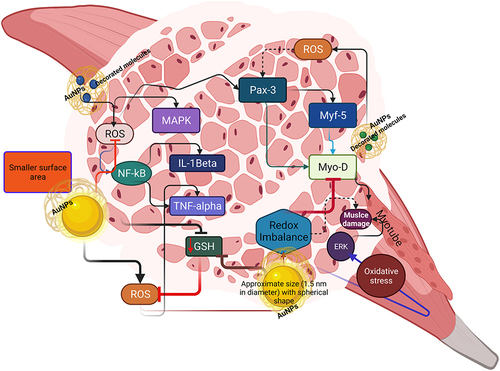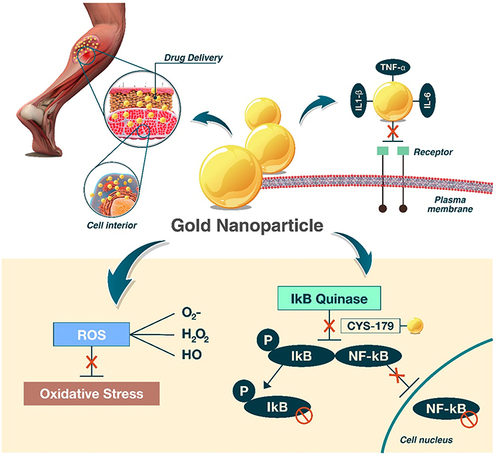Figures & data
Figure 1 Critical factors for gold nanoparticles in muscle cells. The structural and physicochemical characteristics of gold nanoparticles, including the size, shape, charge, and surface modifications, as well as the concentration and administration route are determinants of the therapeutic effectiveness or toxicity to muscle cells.

Table 1 Influence of the Physicochemical Properties of AuNPs on Their Effectiveness from in vitro and in vivo Studies
Figure 2 Schematic illustration explaining how AuNPs with decorating molecules influence redox homeostasis to improve muscle function. A smaller surface area with decorated molecules increases ROS formation and inhibits GSH (black inhibitory marks) and Myo-D (red inhibitory marks). However, AuNPs with selective ligands inhibit ROS formation and downregulate NF-kB and other inflammatory cytokines (TNF-alpha and IL-Beta), which activates Pax-3 and subsequently activates Myf-5 and Myo-D to induce myogenesis.

Table 2 Potential Toxicity of AuNPs on Living Systems from in vitro and in vivo Studies
Figure 3 Gold nanoparticle effects on muscle injury: AuNPs promote anti-inflammatory and antioxidant effects and interact with different molecules, which synergistically reduce oxidative stress. The entry of AuNPs into the cellular environment inhibits circulating proinflammatory cytokines, and interactions with CYS-179 of IKK-B and subsequent inhibition of the NF-kB pathway and amplification of the inflammatory response impact the regulation of oxidative stress.

